Great Hall & State Rooms
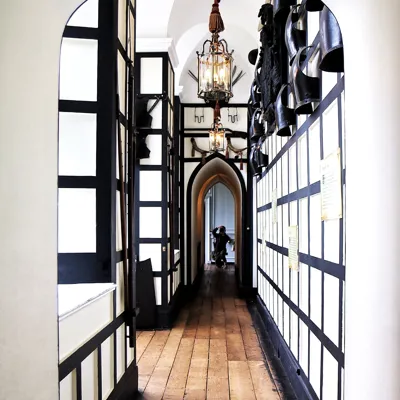
State Rooms
The castle interior is a great opportunity for guests to take a tour through the castle’s rich history. Our state rooms each have distinctive personalities that are a true testament to the opulence of a bygone era.
Visit each room and enjoy the style, artefacts and portraits that all tell the story of the castle’s ownership through time. The decoration of the State Rooms chronicles the castle’s history from the 16th century right up until 1978.
Explore the unique state rooms at your leisure or join one of our guided tours led by one of the very knowledgeable history team. There is no additional cost for these and times can be checked on the notice board outside the Great Hall.
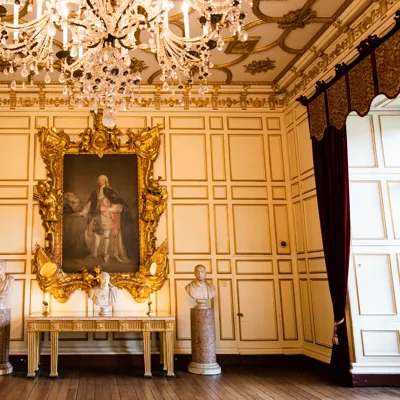
State Dining Room
The State Dining Room was built in 1763 to serve as a more intimate dining space than the Great Hall. It has since hosted members of The Royal Family - from Queen Victoria in 1858 to Queen Elizabeth II in 1996. Featuring an ornate white and gold ceiling, large windows, magnificent paintings and recently restored 18th century Genoese chandelier, this room showcases Early Modern design at its very finest.
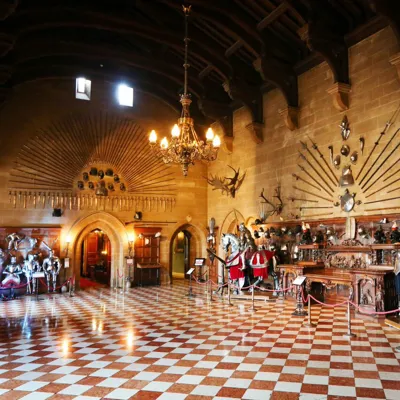
Great Hall
The Great Hall is the largest room in the castle and is steeped in six centuries of history.
The Great Hall was constructed in the 14th century and has had many different uses since. Where once it would have had a fire at its centre with a hole in the roof to let out smoke, it was rebuilt in the 17th century to serve as a grand entrance hall for visitors to The Earl of Warwick. Following a restoration in 1871, after the fire destroyed the original, it stands as a monument to the grandeur of the original medieval hall.
You can view the Great Hall from inside or from above if you follow the route through the Royal Weekend Party that takes you up to the minstrel’s gallery. From above you really get a sense of the sheer scale of this room which is still regularly used for lavish dinners today.
And take some time to admire the craftsmanship of The Kenilworth Buffet and explore the Earl’s renowned armour collection.
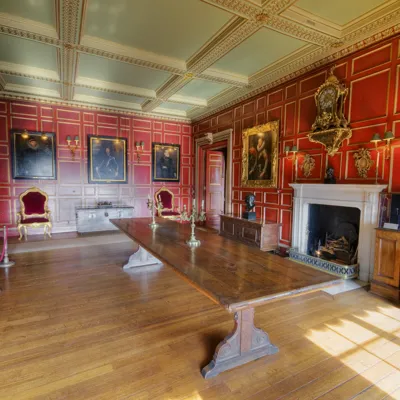
Red Drawing Room
The Red Drawing Room functioned as a reception room between the Great Hall and Cedar Drawing Room. The room houses our portrait of the famous Sir Fulke, the first Greville owner of the castle, who was killed by a stab wound inflicted by his manservant.
The Greville’s ownership led to a positive turning point for the castle, which had fallen into disrepair under Tudor ownership. Their prosperity led to a period of significant investment in the castle again, and this can be seen in this room. It was in the 1750s that Francis Greville redesigned this room in the grand style you can see today.
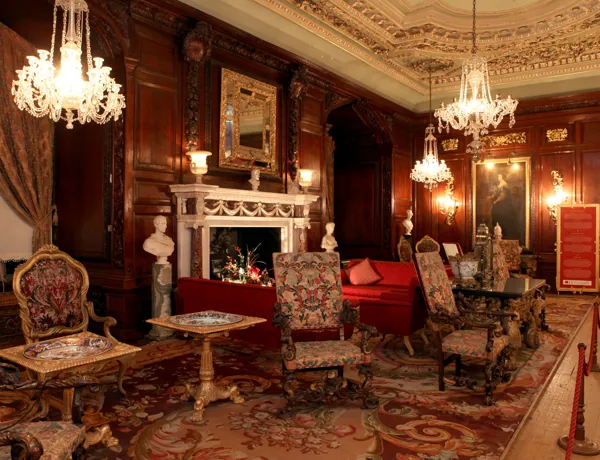
Cedar Drawing Room
The largest of the castle’s drawing rooms, the Cedar Drawing Room is named for the Cedar panelling installed in the 1670s. This room was originally the main ballroom of the castle and was used predominantly for dancing. Distinctly Italian in design, the room also displays exquisite Eastern art in the form of four Japanese Imari Banqueting Dishes made c.1690.
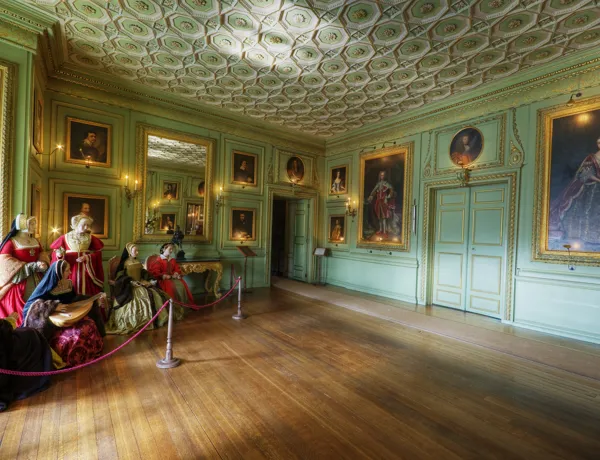
Green Drawing Room
The Green Drawing Room was originally used as a men’s drawing-room. The ceiling, installed in the 1750s, was replicated from the Roman a temple in Palmyra, Syria. The original temple was sadly destroyed in the 2015 Syrian conflict, leaving our Green Drawing Room as the only remaining version of such an opulent ceiling. All the portraits in this room feature people prominent in the English Civil War.
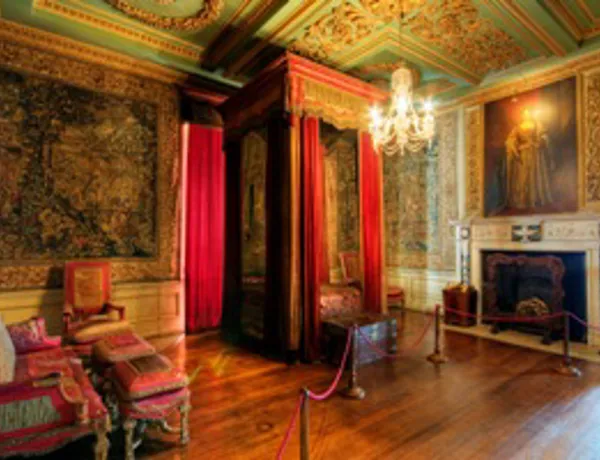
Queen Anne Bedroom
This bedroom claimed its name in 1773 when Queen Anne’s furniture was gifted to Francis Greville by King George III. The key feature of this room is, of course, Queen Anne’s bed. The bed is adorned with red velvet and gold floral silk curtains and was almost certainly the bed in which Queen Anne died in 1714. The room itself is decorated with intricate tapestries created by Franciscus Spiringius in 1604.
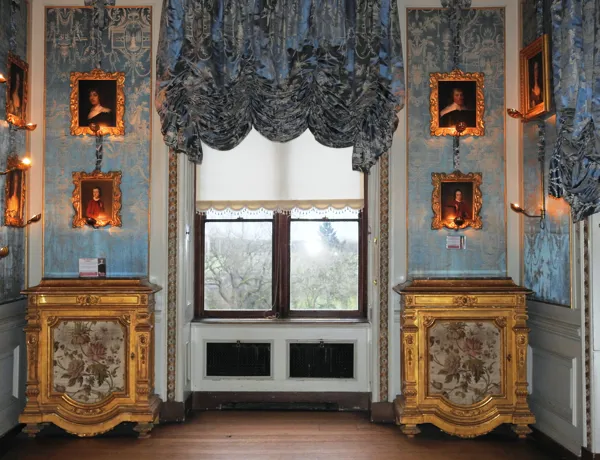
Blue Boudoir
A “love letter to luxury,” the Blue Boudoir was originally used as a dressing room for the adjoining Queen Anne Bedroom until Daisy Greville had the room converted into a boudoir (a lady’s dressing room, bedroom or private sitting room) and used it as a writing room. Standing in a room swathed in blue Lyon silk, looking out over the river and beautiful grounds, you can truly understand the life of Daisy, Countess of Warwick, an 1890s socialite-turned-activist with a passion for French Culture. This room also showcases our waxwork figures of King Henry VIII and his six wives.
This area is accessible to wheelchair users via the accessible lift.
Entrance to the chapel is via 5 steps. Please note a small area of the armoury passageway is very narrow and wheelchair users may need to retrace their steps. Please speak to any member of staff for further details. Please note that this attraction features waxwork mannequins throughout.
Touch tours are available free to sight-impaired guests and should be booked in advance.
Braille information is available.
There is a quiet time in this area between 3 and 4 pm.